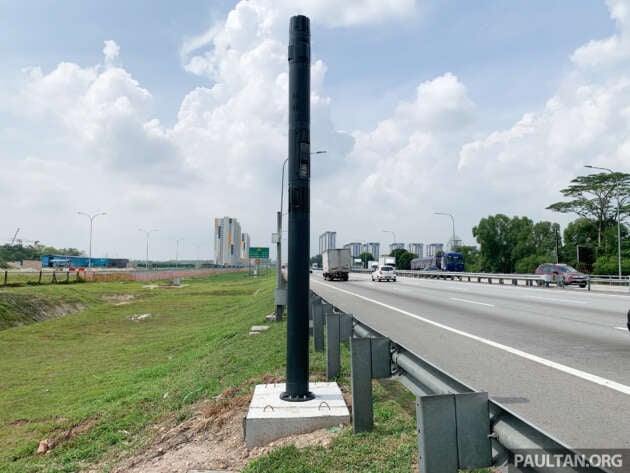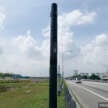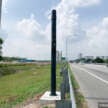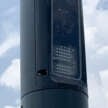The current Automated Enforcement System (AES) cameras found on highways in Malaysia are being updated to the Automated Awareness Safety System (AWAS) with new hardware, and an example of the new equipment has been found to be installed along the KM17.2 of the ELITE highway towards the Kuala Lumpur International Airport (KLIA).
This particular setup is the Ekin Spotter, a modular roadside furniture ensemble that can be tasked with different functions through the installation of various modules. In this application as a speed camera, the Spotter is observed to be outfitted with a speed sensor, white flash strobe, and a surveillance camera module.
Also available for the Ekin Spotter are modules for city and beacon lighting, audio speakers, antennas as well as WiFi hotspots. According to the Ekin website, the Spotter is capable of high-quality surveillance, day and night, and is capable of monitoring large areas and recording high-resolution video.
The Ekin Spotter is also able to monitor changes in its surroundings “using its own sensor technology”, and can notify a central system in the event of unusual condition changes such as increased temperature, humidity, tampering, or unauthorised door entry, according to the company’s website.
In June last year, the Malaysian government stated its intention to install more AWAS cameras as it has been found to be very effective, with over 99% compliance recorded, according to the Malaysian Institute of Road Safety Research (MIROS).
Looking to sell your car? Sell it with Carro.






















AI-generated Summary ✨
Comments express mixed feelings about the updated AES speed camera system; many believe it is now intentionally less visible to catch drivers unaware, leading to increased revenue through fines rather than improving road safety. Several users emphasize that visible warning signs and camera notices could serve as effective deterrents, aligning with practices in Europe and South Korea to promote discipline and awareness. There are concerns about the cameras' ability to differentiate vehicle types or monitor various offenses beyond speeding. Some critics see the system as primarily a profit-making tool, accusing authorities of exploiting the cameras for revenue rather than safety, while others advocate for better enforcement and education. Overall, sentiments range from skepticism about the transparency and motives behind the new setup to calls for visible warnings and fair enforcement.